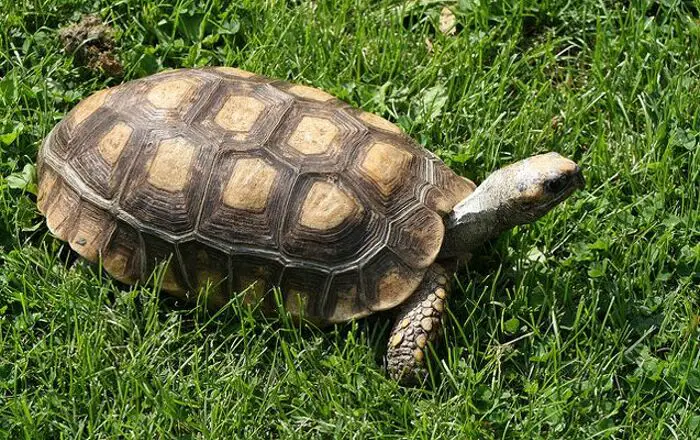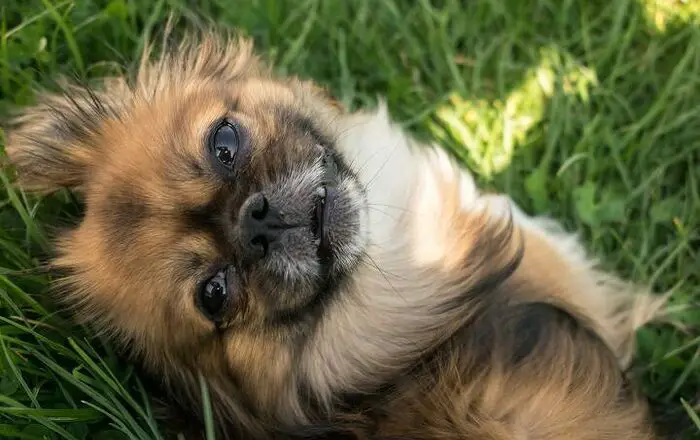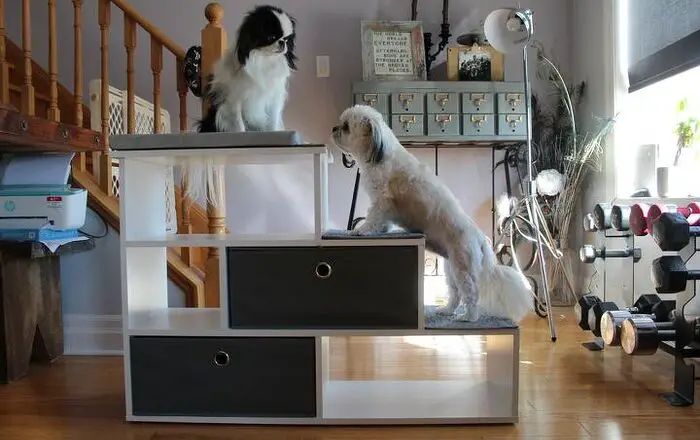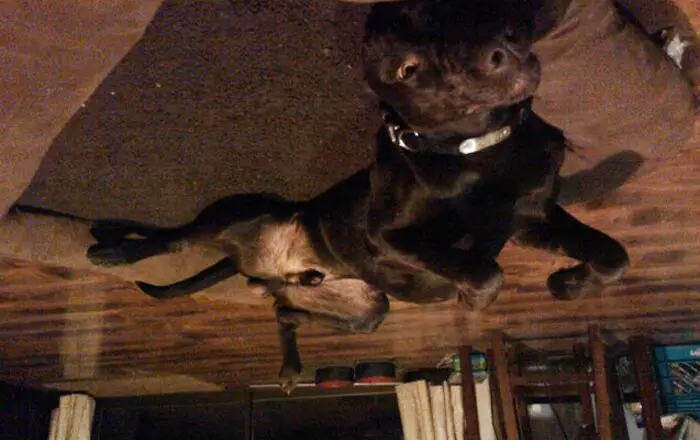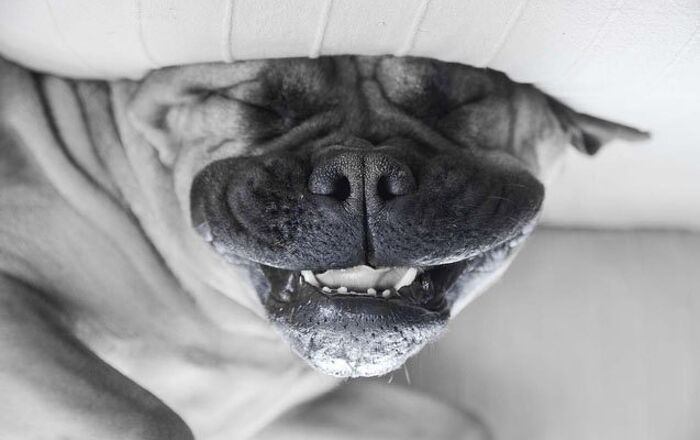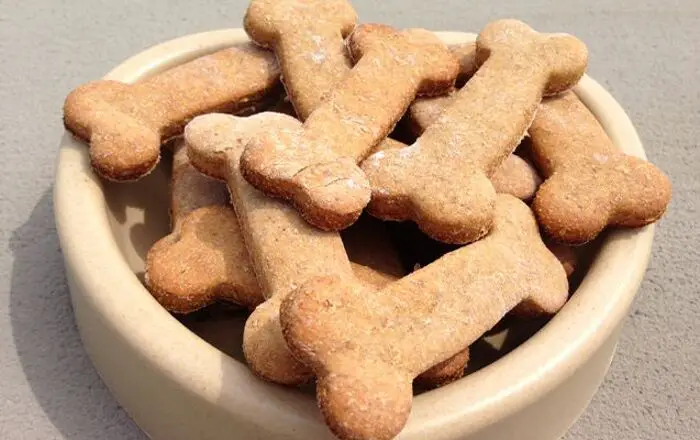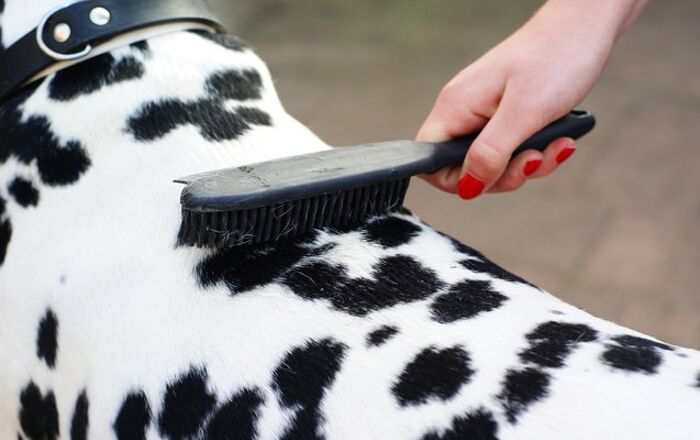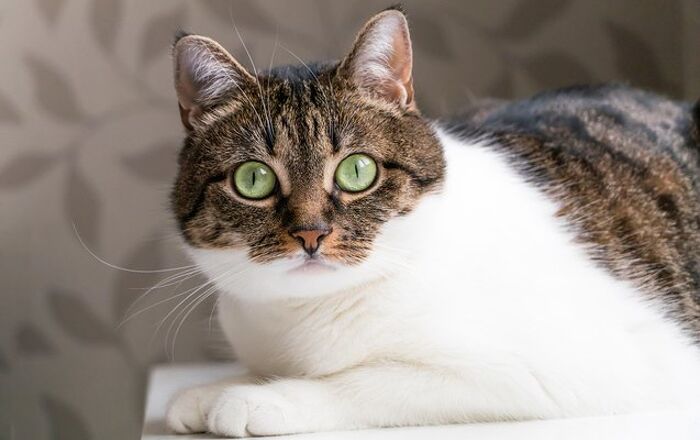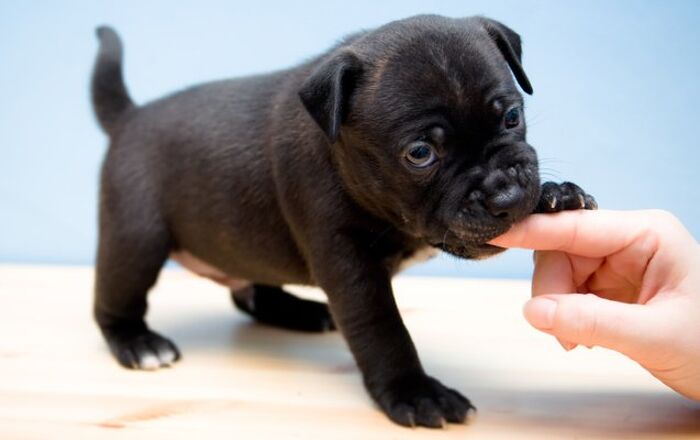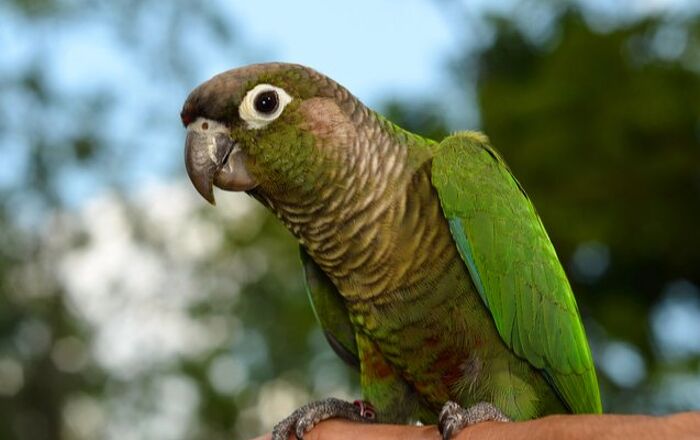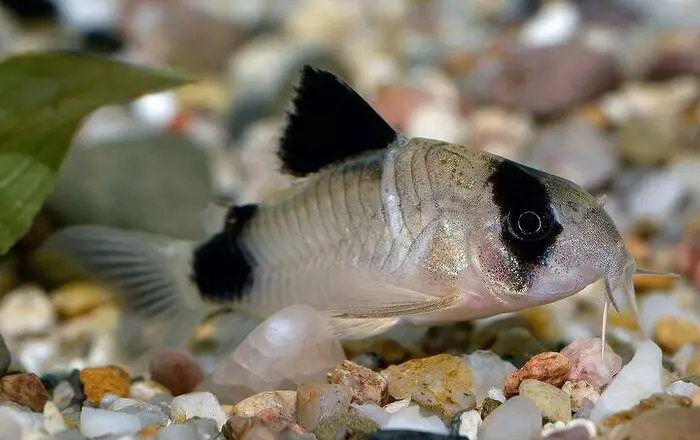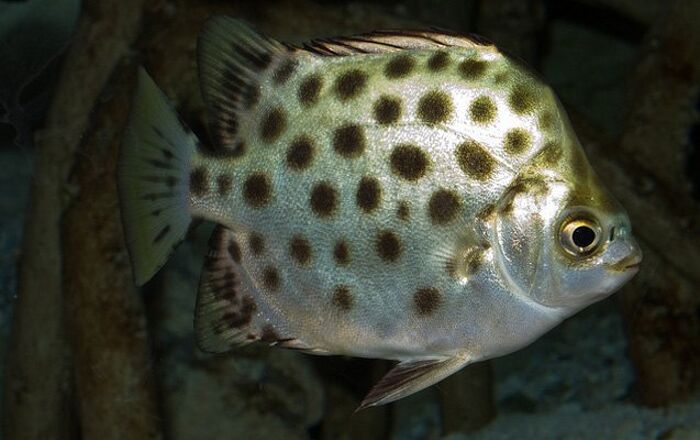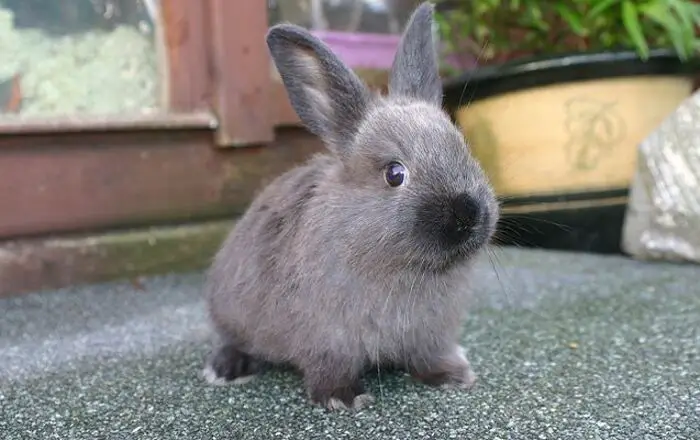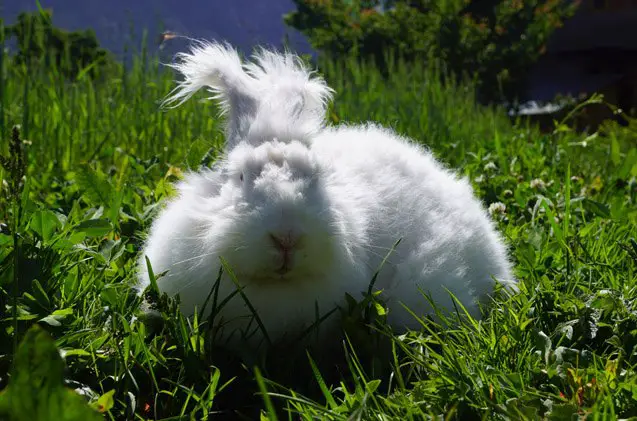
German Angora Rabbit Breed History
During the 1920s, in Germany, Angora breeders wanted to improve the breed for commercial purposes. They started from breed that was most similar to today’s English Angora, which produced around 200 grams of wool per year. In 1960s, selective breeding led to German Angora Rabbit breed producing over 1000 grams of wool per year, only to make a new record in the past decade, when their production hit the 2000-gram goal.
This breed is not recognized by the American Rabbit Breeders Association, as it was deemed that it lacks distinct traits. Although it has a different quality of fur, German Angora is still quite similar to the English Angora in terms of body shape and overall appearance. However, this breed has its own association, The International Association of German Angora Rabbit Breeders.
In Europe, this breed is just called Angora (bred according to German standards).
The German Angora Rabbit is a friendly, long-haired rabbit that makes a great family pet.
Overall Description
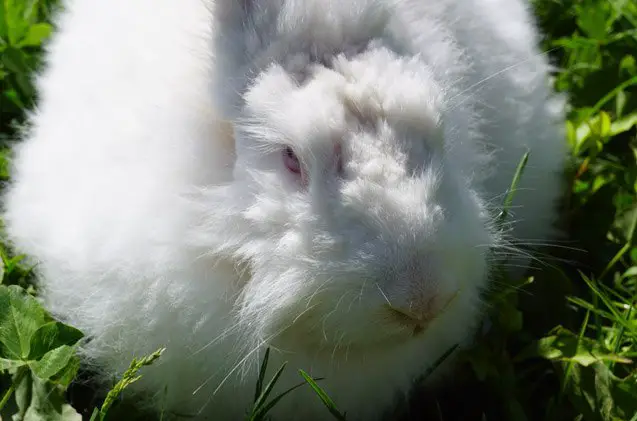
Apart from their beautiful coats, the German Angora rabbits are best known for the interesting furnishings on their face and ears, commonly known as tassels. Their ears are upright and well-haired, with tufts of hair on the top. Considered to be large-sized, these rabbits can weigh from 5.5 lbs to 12 lbs. Their bodies are very symmetrical and of cylindrical shape, being at the same width and height, and of medium length.
Coat
All Angoras are treasured for their fluffy fur, but the German Angora Rabbit outperforms all of its relatives. Their hair is long, very fine and woolen. Even though Angora rabbits usually have high-maintenance fur, the German variety of the breed is popular for the effortless upkeep of the coat. Their woolly hair will not shed, as they have the non-molt gene. Their fur is extremely resistant to matting, and they don’t need to be brushed or groomed. However, every 3 months, these rabbits need to be sheared. Their wool can be spun into yarn, as their production is abundant and the quality of hair outstanding.
Colors
The German Angora Rabbit comes in all monochromatic colors, but the most common is REW or ruby-eyed white rabbit. In case of colored rabbits, the color of their coat is never uniform. Their undercoat is always lighter than the top of the fur, which appears in a more intense, vibrant hue. Markings or patterns of the coat are rare, as they are not allowed in breeding standards, and, as such, considered an undesirable trait.
The German Angora Rabbit’s coat is woolly, and when sheared, it can be spun into soft, luxurious yarn.
Care Requirements
Not unlike all long-haired rabbit breeds, the German Angora will require a little extra effort to stay healthy and happy. The most important care requirements of the breed are its diet and grooming needs.
When it comes to feeding German Angora rabbits, they’ll happily nibble on veggies, fruits, and rabbit pellets, same as any other bunny. But the majority of their diet needs to consist of hay. Roughage such as hay helps Angoras with the wool block, and it’s a problem that affects the German variety of the breed even more. As they produce a lot of wool, it’s only logical to assume that bigger amounts of the hair end up in their digestive system while they are grooming themselves.
These rabbits can be kept both indoors and outdoors, both, in both cases, their living environment must be safe and comfortable. If you’re planning on keeping a German Angora in your home, you’ll need an enclosure of appropriate size. Their crate should be large enough for them to be able to stand on their hind legs and freely walk around. The bottom should be padded with rabbit-friendly bedding and changed frequently to maintain the hygiene inside the enclosure. The requirements for outdoor enclosure are the same, except you’ll need to provide them protection from extreme temperatures and potential predators as well.
Sweet-natured and affectionate, the German Angora rabbits will love playing with their owners. When you’re letting them to go outdoors, you’ll need to monitor them the whole time. Allow them to play only in fenced parts of your yards, where no other animal could harm them and where they can’t get lost. During their playtime indoors, make sure that no electric cables or valuables are lying around. Rabbits love to nibble on stuff, and there are a lot of thing in anyone’s home that could seriously harm the rabbit if they chew on them.
Health
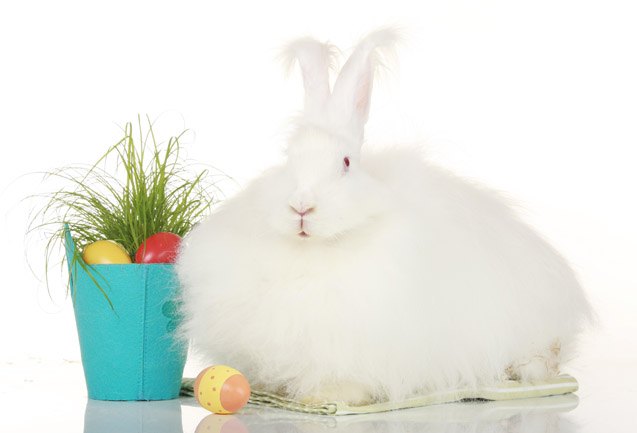
In general, the German Angora Rabbit is a healthy, sturdy breed. The only breed-specific issues that can arise can be prevented with good care and a grooming routine.
As they have lush, fluffy coats, these rabbits often swallow a lot of their hair while grooming themselves. This can lead to wool block, as previously mentioned, often referred to as GI stasis. This is a serious, life-threatening condition, which is why it’s essential to catch it in its early stages. Unfortunately, this means you’ll have to pay close attention to your rabbit’s poop.
Constipation, small and dry poop, or the so-called “string of pearls” (poop connected by strands of hair) are the most common signs of GI stasis. As soon as you notice any of these symptoms, you need to take your bunny to the vet. A good way to prevent wool block is to feed a lot of roughage and shear your German Angora at least every 90 days.
The hay is not only a good dietary choice for its benefits to the rabbit’s digestive system. Rabbit’s teeth grow throughout their lifetime, and chewing on hay helps grind them down. It’s a win-win choice!
Unless you’re planning on breeding your rabbits, getting them spayed or neutered is a choice worth considering. This routine procedure can have tremendous benefits on your rabbit’s health and personality (although the German Angora already has a lovely temperament!). Spaying or neutering your rabbit will minimize the risk of cancer and diseases that affect reproductive organs and eliminate their instinct to mark the territory with urine.
The German Angora Rabbit doesn’t shed and has a mat-free coat.
Temperament/Behavior
As a breed that depends on humans to survive, the German Angora is a friendly, docile rabbit. If socialized properly from young age, these rabbits make excellent pets. Because of their fluffy fur, they are accustomed to grooming and human touch, so they don’t mind being petted and enjoy spending time with their owners.
They are also very intelligent and love to play. With a little effort and patience, you can even train your German Angora Rabbit to come when called and use the litter box. They are not too active and energetic, and they’ll be content with napping in their comfy enclosure until the playtime comes.
Since the German Angora Rabbit doesn’t shed and has a generally sociable temperament, it is a good choice for families with kids. They are not prone to biting or scratching, love cuddles and there is no risk of young children ingesting hair, like there is with shedding long-haired breeds. Of course, before you decide on a pet rabbit for your family, make sure to explain to your children how to properly play and cuddle with German Angora without hurting them.
Photo credit: Shal09/Shutterstock.com; absolutimages/Shutterstock.com

